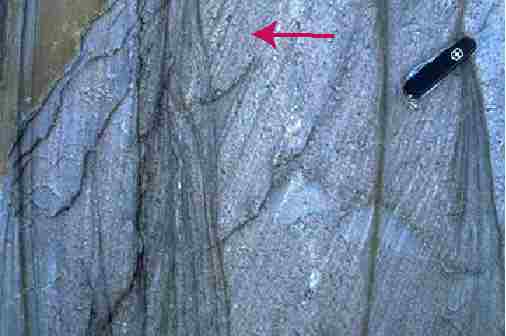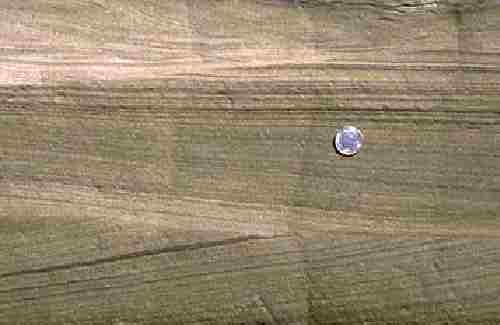
Cross beds in Cambrian Prospect Mtn. Quartzite, E. Nevada.
Cross-Bedding
Cross beds form from running water. As the water flows, it creates bedforms, such as ripples or dunes, on the floor of the channel. Sediment deposited on the downcurrent side of these bedforms is deposited at an angle--not horizontally. If preserved, the layering is also inclined and dips in the direction of water transport.
Cross beds can therefore form in any environment with moving water, such as braided or meandering rivers, shorelines of lakes or oceans, or in submarine settings which are affected by deep sea currents. Cross beds also form in sand dune environments--these however, are usually much larger scale than those created by water. Additionally, the grain size of wind blown sand is generally very fine.

Cross beds in Cambrian Prospect Mtn. Quartzite, E. Nevada.
The photo above shows how cross beds can indicate the "up" direction in tilted rocks. The red arrow points to younger rocks. Notice that bedding in the younger rocks cuts the cross beds of the older rocks.
In the lower photo, are these rocks right side up or upside down? Click here for answer.

Eocene Coaledo Formation, Coos Bay, Oregon.
Back to depositional environments.
Back to sedimentary rocks--features.